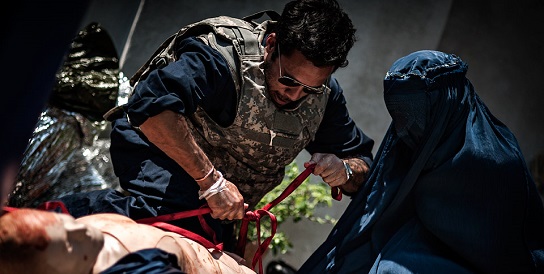Beginning with this ‘Practice-Science’ post, we will be incorporating the voices of practitioners in a variety of conflict-focused fields who are encountering challenges and phenomena which deserve more attention by the world of research. Our aim is to create a dynamic dialogue between practitioners and social scientists in order to drive forward new research and methodologies that can be employed in the field. We will be featuring this orientation once a month and encourage readers to comment on the posts, suggest existing research and ultimately generate new research to continue bridging the ‘Science-Practice’ gap.
By Lily Hindy
Journalists working in conflict zones have been the targets of unprecedented violence in recent years. After a spate of kidnappings and murders in Syria, in 2015 a group of press freedom organizations, major news outlets, and journalists formed an alliance called ACOS – A Culture of Safety – to share information and promote best practices to keep journalists safe in conflict zones. A growing number of security firms now offer some form of HEFAT – Hostile Environment and First Aid Training – to teach journalists how to mitigate threats to their safety while working in dangerous areas. Fifteen continuous years of war have resulted in a large supply of data by the U.S. military about how and why soldiers are injured and die on the battlefield. Yet, a comparable collection of data on the security incidents faced specifically by conflict journalists, who face a different set of challenges than soldiers, is lacking. The most comprehensive public data on journalist security incidents is housed by the Committee to Protect Journalists (CPJ). Their research on journalist deaths since 1992 is available in database form with data points for circumstances surrounding each death; their research on missing journalists is separate and not in database form. A single database of all security incidents is needed, including detailed information on kidnappings and deaths, as well as incidents that lead to serious injury but not death. Monitoring and evaluation of the HEFAT courses, with feedback from journalists in the field, is also critical.
A good model for collecting data on journalist security is the Aid Worker Security Database (AWSD), a project of the Humanitarian Outcomes team. Data is broken down by means of attack (i.e., aerial bombardment, bodily assault, rape or serious sexual assault); attack context (i.e., ambush/attack on road, raid, detention); and location of attack (i.e., home, office, custody). Using the AWSD, comprehensive reports can be generated to do needs assessments and determine security trends among aid workers.
The journalism security field is still relatively new. If more research is generated on security incidents faced by journalists, ACOS and others working in the field will be able to better identify ongoing security trends and implement evidence-based training and security protocols to keep them safe.
Photo Credit: Reporters Instructed in Saving Colleagues, Inc (RISC) at the Bronx Documentary Center in June 2015. ©James Lawler Duggan/RISC
